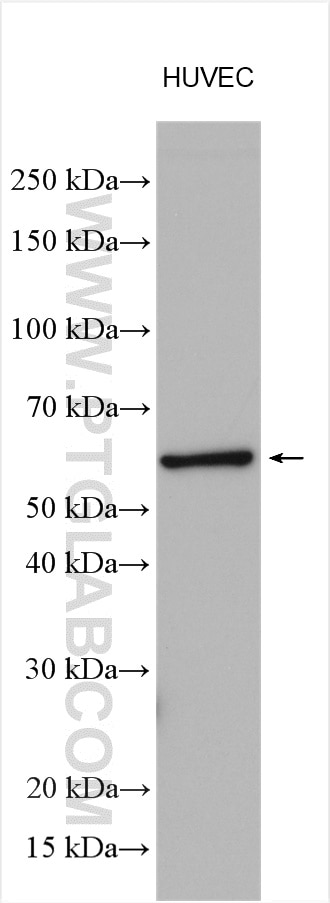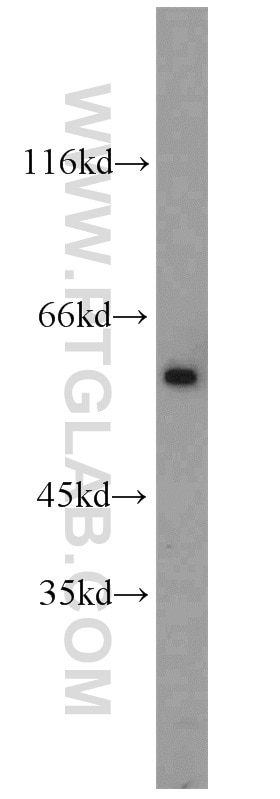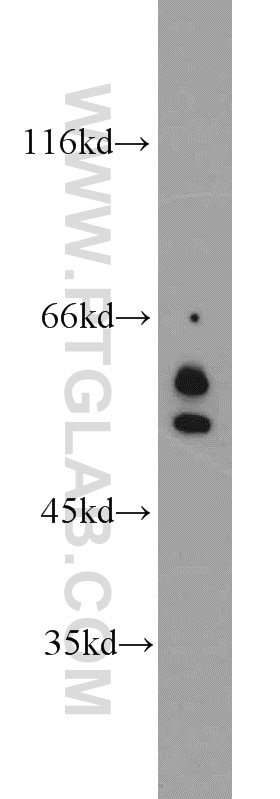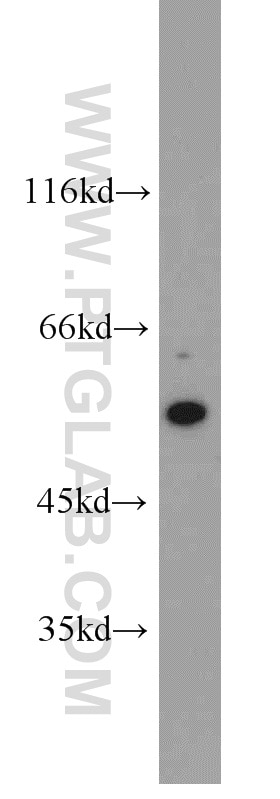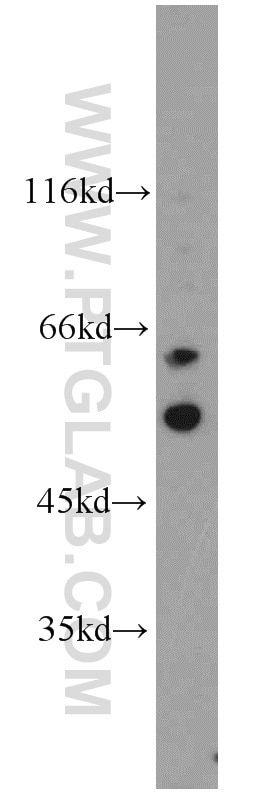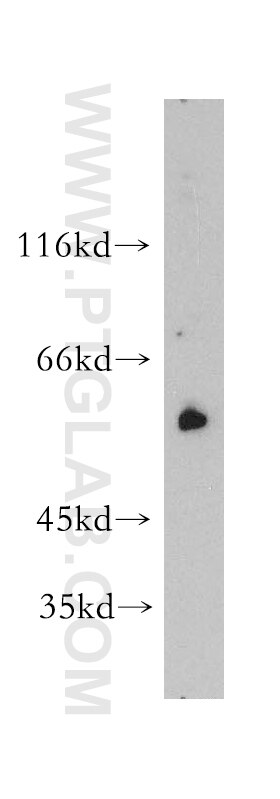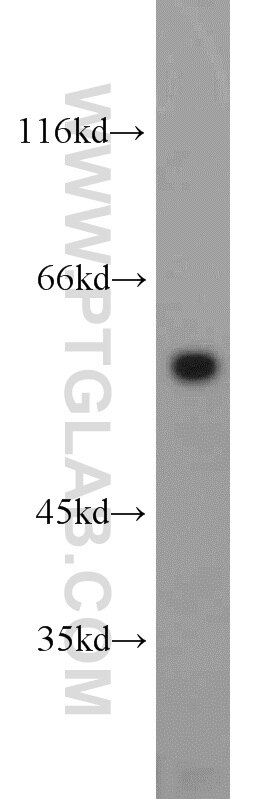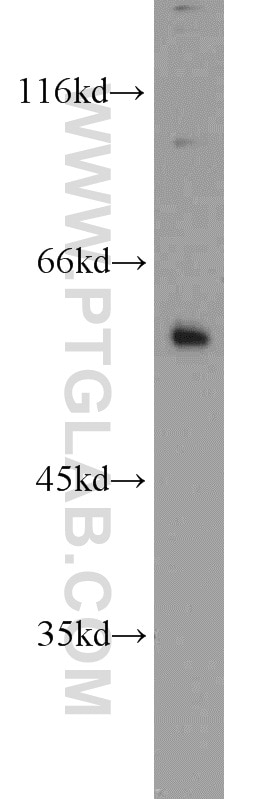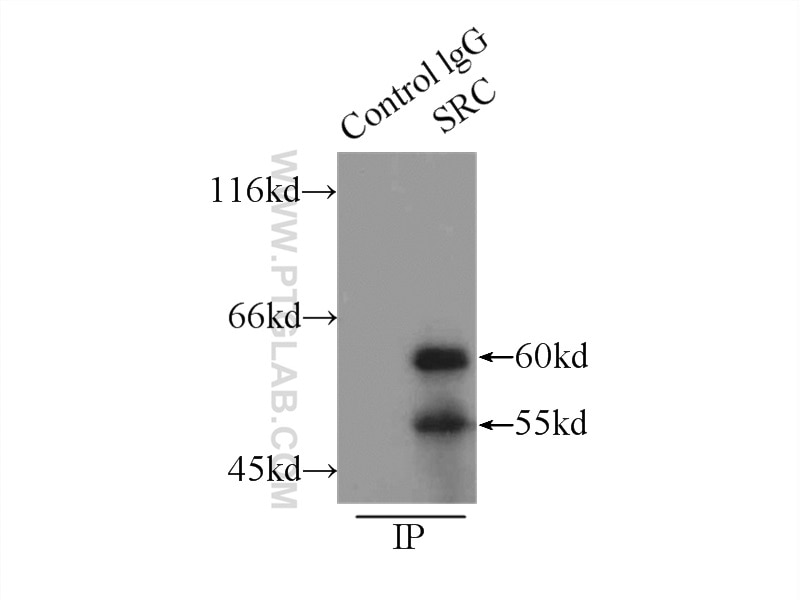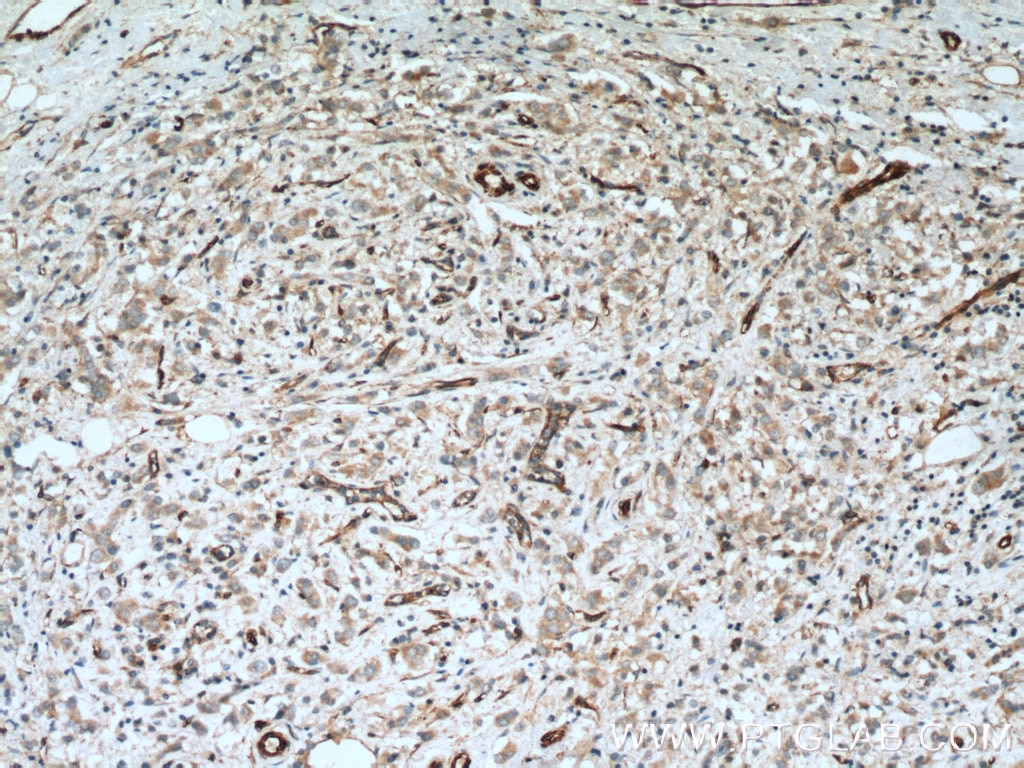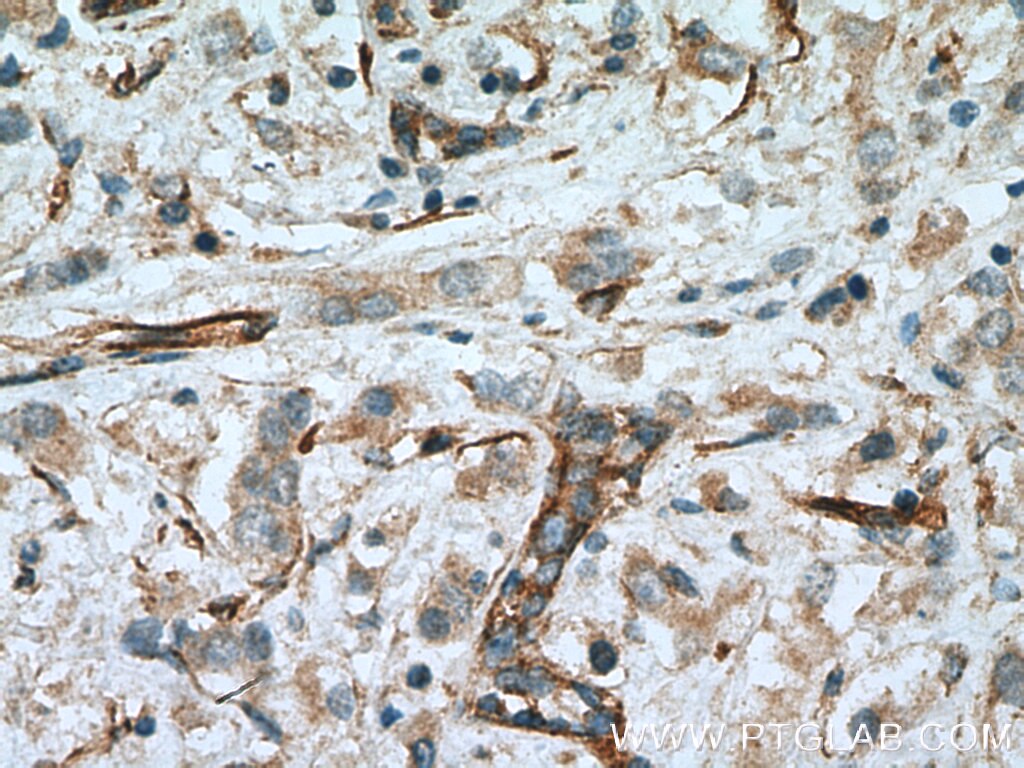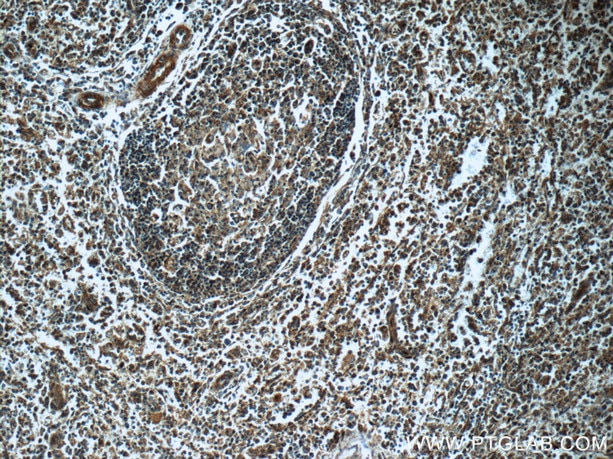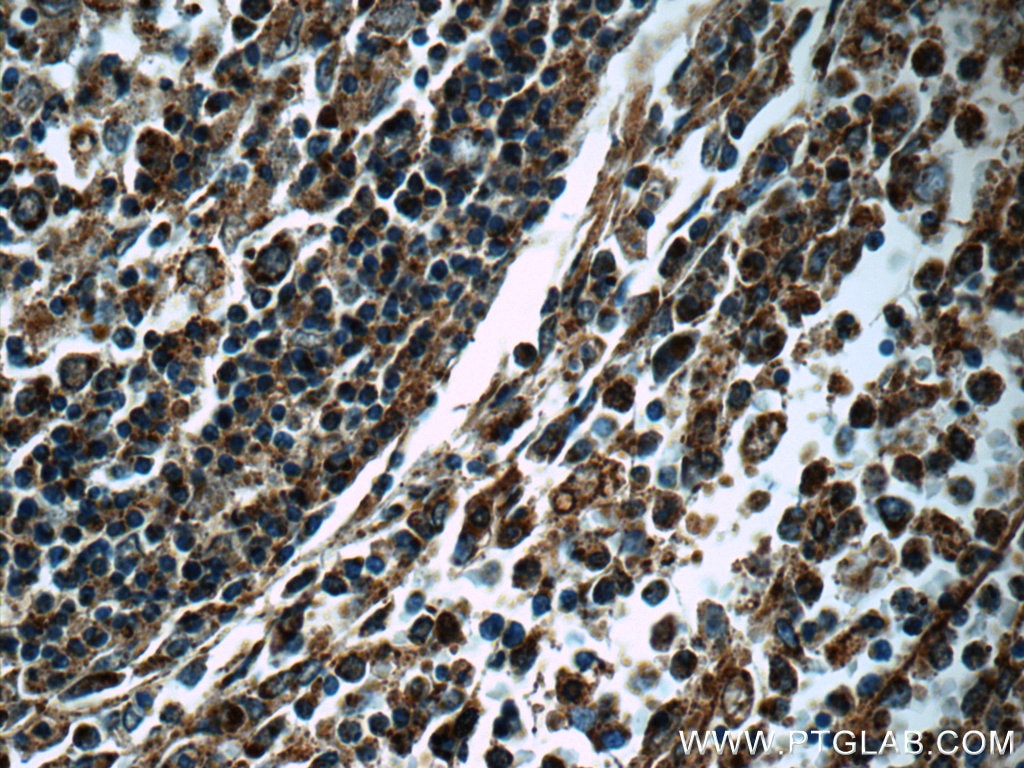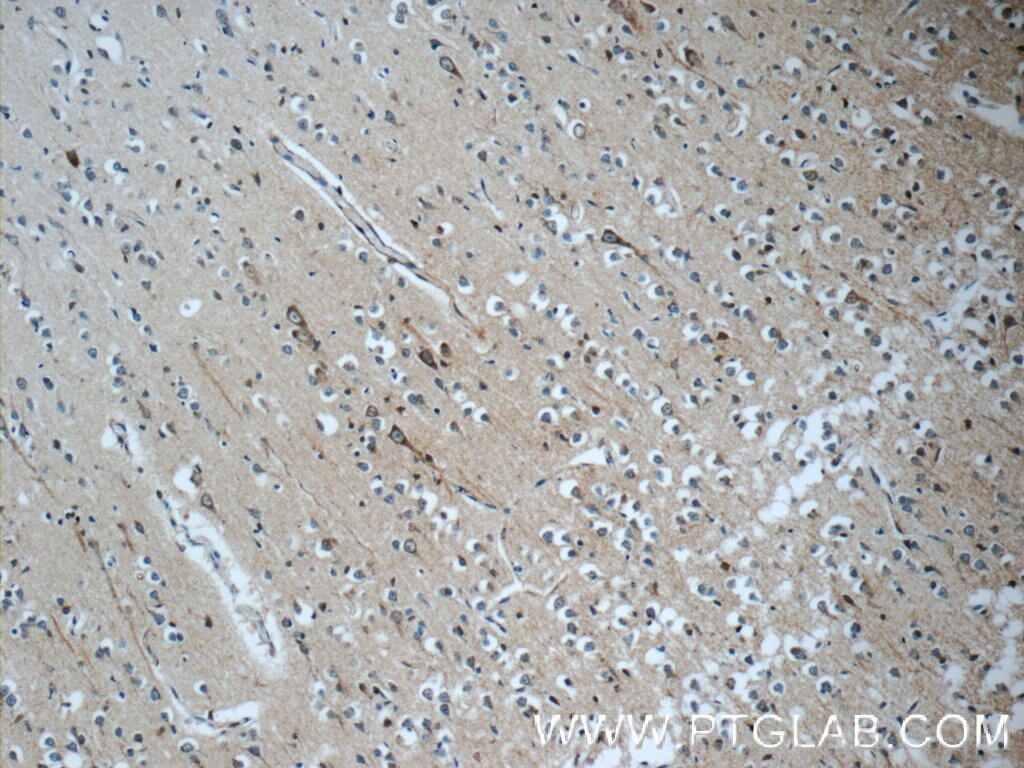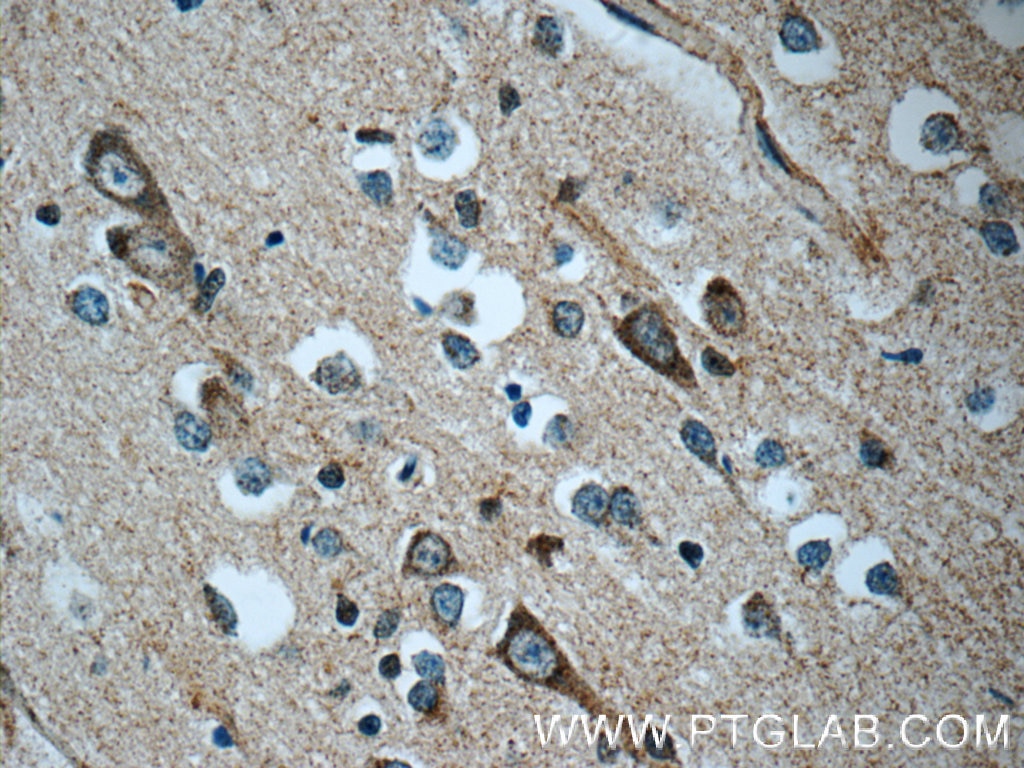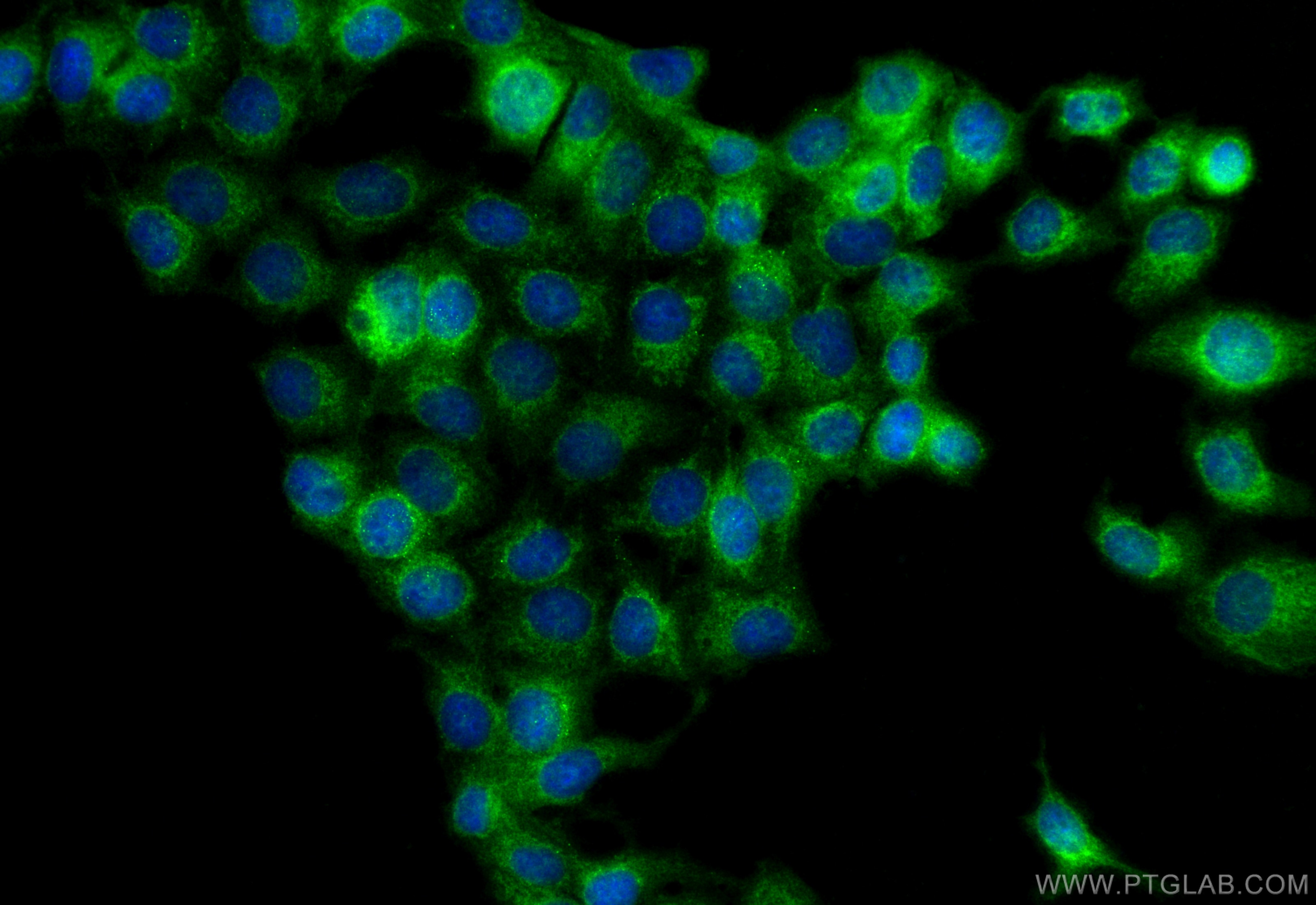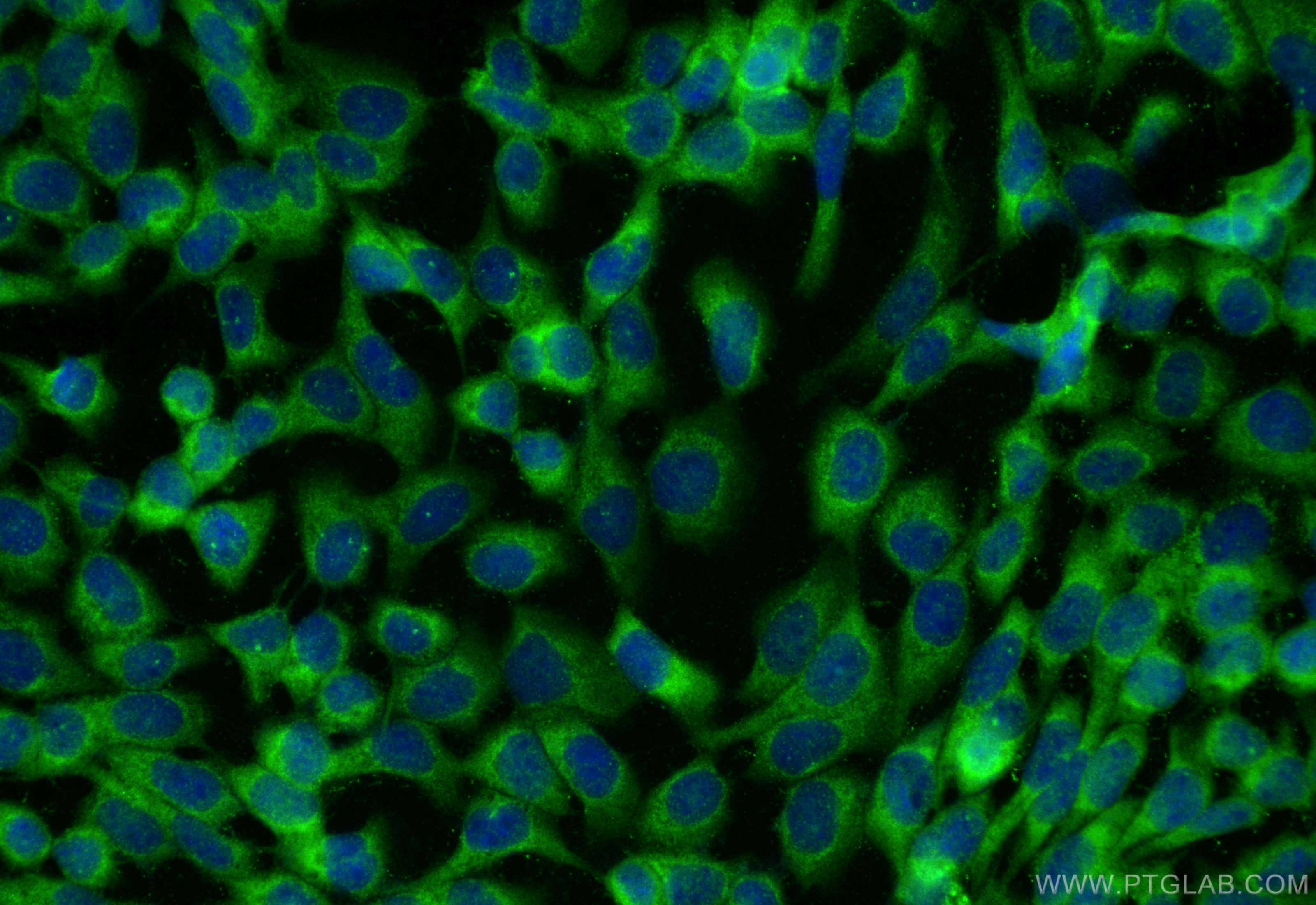Anticorps Polyclonal de lapin anti-c-SRC
c-SRC Polyclonal Antibody for WB, IHC, IF/ICC, IP, ELISA
Hôte / Isotype
Lapin / IgG
Réactivité testée
Humain, rat, souris, Hamster
Applications
WB, IHC, IF/ICC, IP, CoIP, ELISA
Conjugaison
Non conjugué
N° de cat : 11097-1-AP
Synonymes
Galerie de données de validation
Applications testées
| Résultats positifs en WB | cellules HUVEC, cellules A431, cellules CHO, cellules COLO 320, cellules Jurkat, cellules SH-SY5Y, tissu cérébral de souris |
| Résultats positifs en IP | cellules SH-SY5Y |
| Résultats positifs en IHC | tissu de cancer du sein humain, tissu cérébral humain, tissu splénique humain il est suggéré de démasquer l'antigène avec un tampon de TE buffer pH 9.0; (*) À défaut, 'le démasquage de l'antigène peut être 'effectué avec un tampon citrate pH 6,0. |
| Résultats positifs en IF/ICC | cellules A431, cellules MCF-7 |
Dilution recommandée
| Application | Dilution |
|---|---|
| Western Blot (WB) | WB : 1:500-1:3000 |
| Immunoprécipitation (IP) | IP : 0.5-4.0 ug for 1.0-3.0 mg of total protein lysate |
| Immunohistochimie (IHC) | IHC : 1:100-1:400 |
| Immunofluorescence (IF)/ICC | IF/ICC : 1:200-1:800 |
| It is recommended that this reagent should be titrated in each testing system to obtain optimal results. | |
| Sample-dependent, check data in validation data gallery | |
Applications publiées
| KD/KO | See 1 publications below |
| WB | See 75 publications below |
| IHC | See 10 publications below |
| IF | See 3 publications below |
| IP | See 4 publications below |
| CoIP | See 2 publications below |
Informations sur le produit
11097-1-AP cible c-SRC dans les applications de WB, IHC, IF/ICC, IP, CoIP, ELISA et montre une réactivité avec des échantillons Humain, rat, souris, Hamster
| Réactivité | Humain, rat, souris, Hamster |
| Réactivité citée | rat, Humain, souris |
| Hôte / Isotype | Lapin / IgG |
| Clonalité | Polyclonal |
| Type | Anticorps |
| Immunogène | c-SRC Protéine recombinante Ag1575 |
| Nom complet | v-src sarcoma (Schmidt-Ruppin A-2) viral oncogene homolog (avian) |
| Masse moléculaire calculée | 60 kDa |
| Poids moléculaire observé | 55 kDa, 60 kDa |
| Numéro d’acquisition GenBank | BC011566 |
| Symbole du gène | SRC |
| Identification du gène (NCBI) | 6714 |
| Conjugaison | Non conjugué |
| Forme | Liquide |
| Méthode de purification | Purification par affinité contre l'antigène |
| Tampon de stockage | PBS with 0.02% sodium azide and 50% glycerol |
| Conditions de stockage | Stocker à -20°C. Stable pendant un an après l'expédition. L'aliquotage n'est pas nécessaire pour le stockage à -20oC Les 20ul contiennent 0,1% de BSA. |
Informations générales
SRC, also named as SRC1 and p60-Src, belongs to the protein kinase superfamily, Tyr protein kinase family and SRC subfamily. It is a non-receptor protein tyrosine kinase that plays pivotal roles in numerous cellular processes such as proliferation, migration, and transformation. In concert with PTK2B, SRC plays an important role in osteoclastic bone resorption. It promotes energy production in osteoclasts by activating mitochondrial cytochrome C oxidase. SRC can be detected as 60 kDa and 55 kDa (PMID: 15047935, 21461171).
Protocole
| Product Specific Protocols | |
|---|---|
| WB protocol for c-SRC antibody 11097-1-AP | Download protocol |
| IHC protocol for c-SRC antibody 11097-1-AP | Download protocol |
| IF protocol for c-SRC antibody 11097-1-AP | Download protocol |
| IP protocol for c-SRC antibody 11097-1-AP | Download protocol |
| Standard Protocols | |
|---|---|
| Click here to view our Standard Protocols |
Publications
| Species | Application | Title |
|---|---|---|
Nat Genet Pancreatic cancer risk variant in LINC00673 creates a miR-1231 binding site and interferes with PTPN11 degradation. | ||
Cell Stem Cell Amino acid catabolism regulates hematopoietic stem cell proteostasis via a GCN2-eIF2α axis. | ||
Sci Adv Platelet P-selectin initiates cross-presentation and dendritic cell differentiation in blood monocytes. | ||
J Cell Biol Metalloproteinase MT1-MMP islets act as memory devices for podosome reemergence. | ||
Acta Pharmacol Sin Adaptor protein CEMIP reduces the chemosensitivity of small cell lung cancer via activation of an SRC-YAP oncogenic module | ||
Cell Death Differ The E3 ubiquitin ligase TRIM7 suppressed hepatocellular carcinoma progression by directly targeting Src protein. |
Avis
The reviews below have been submitted by verified Proteintech customers who received an incentive for providing their feedback.
FH A (Verified Customer) (07-15-2025) | Used for caco2 cells and animal colon tissue
|
